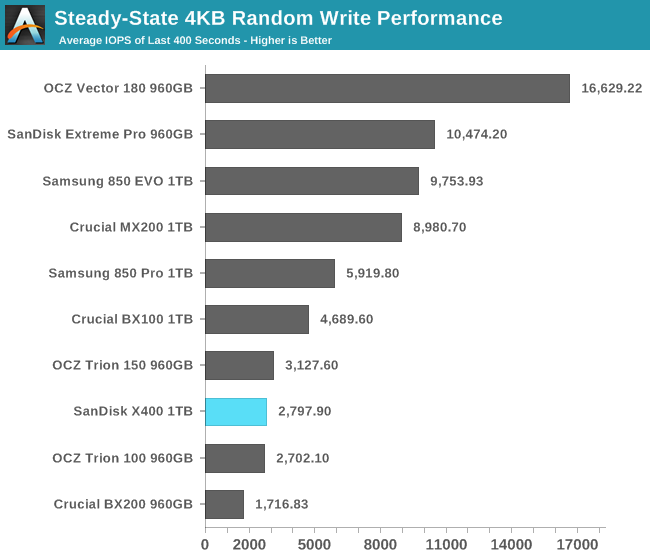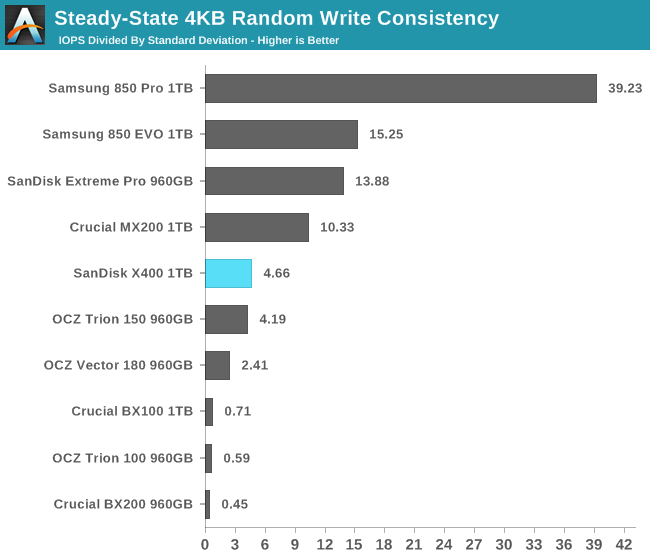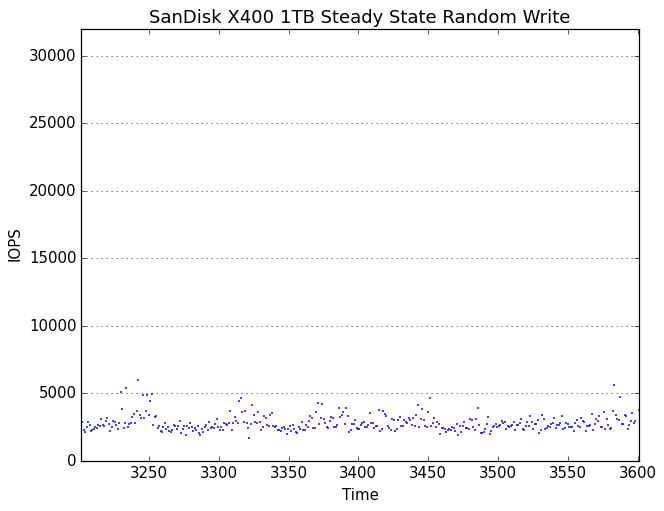The SanDisk X400 1TB SSD Review
by Billy Tallis on May 6, 2016 9:00 AM ESTPerformance Consistency
Our performance consistency test explores the extent to which a drive can reliably sustain performance during a long-duration random write test. Specifications for consumer drives typically list peak performance numbers only attainable in ideal conditions. The performance in a worst-case scenario can be drastically different as over the course of a long test, as drives can run out of spare area and have to start performing garbage collection as well as sometimes even reach power or thermal limits.
In addition to an overall decline in performance, a long test can show patterns in how performance varies on shorter timescales. Some drives will exhibit very little variance in performance from second to second, while others will show massive drops in performance during each garbage collection cycle but otherwise maintain good performance, and others show constantly wide variance. If a drive periodically slows to hard drive levels of performance, it may feel slow to use even if its overall average performance is very high.
To maximally stress the drive's controller and force it to perform garbage collection and wear leveling, this test conducts 4kB random writes with a queue depth of 32. The drive is filled before the start of the test, and the test duration is one hour. Any spare area will be exhausted early in the test and by the end of the hour even the largest drives with the most overprovisioning will have reached a steady state. We use the last 400 seconds of the test to score the drive both on steady-state average writes per second and on its performance divided by the standard deviation.

The X400's steady-state write performance is unimpressive but typical for planar TLC drives.

The consistency score of the X400 is good but not great, and it is again close to the OCZ Trion 150.
 |
|||||||||
| Default | |||||||||
| 25% Over-Provisioning | |||||||||
The X400 does not display an initial burst of extreme performance and instead wobbles around 20k IOPS before dropping down to steady state. The X400 does not exhibit severe stalling at any stage of the test, whereas the previously reviewed Trion 150 handles the transition to steady state poorly.
 |
|||||||||
| Default | |||||||||
| 25% Over-Provisioning | |||||||||
In steady-state the X400's performance is not tightly regulated but doesn't have any outliers of significantly below-average performance. Extra overprovisioning does little to improve the worst-case performance but greatly increases the average and best-case write performance.










41 Comments
View All Comments
runasroot - Thursday, January 12, 2017 - link
Ugh, I can't edit my comment, come on.